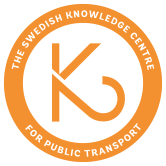A growing research literature is focusing on how effects from increased accessibility may differ according to socio-economic aspects of neighbourhoods and households. This has raised concerns of whether areas with high accessibility may became unaffordable for low-income households, who, at the same time, may depend on public transport accessibility more than average households. We use difference-in-difference estimates of hedonic price models to study the distribution of effects around the new stations provided by a railway tunnel in Malmö, Sweden. The study finds that the lower-price segments are the most affected by the improved accessibility, which becomes clearer when different control groups are used for different market segments. Accessibility is therefore interpreted as highly important for households in the lower-price segments. From a housing accessibility perspective, this is described as a double-edged sword. On the one hand, the owners of the apartments in these neighbourhoods, who benefit from the price increase, are typically low-income households. On the other hand, low-income households who are not owners may find the area prohibitively expensive due to price increases. Tenure of the catchment area is thus an important factor in understanding the distributional effects of accessibility. Integrating transport and housing-related planning, and specifically addressing the issue of affordability in early assessments, are therefore recommended.
